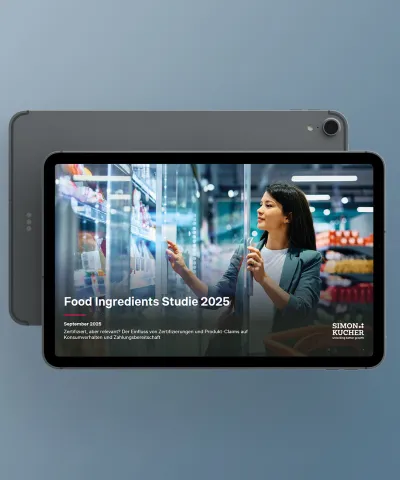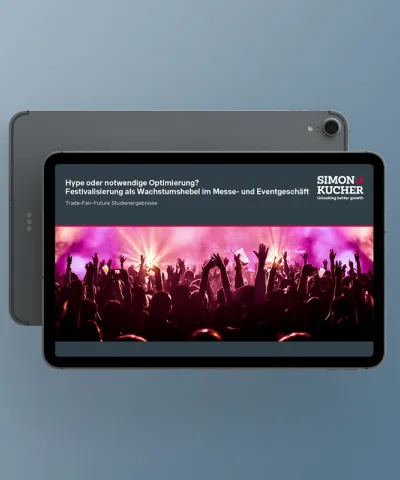Retail is more competitive than ever, and businesses operating without a structured revenue strategy risk losing market share to data-driven competitors.
Revenue management isn’t just a set of tactics; it’s an organizational shift that requires changes in your retail infrastructure, breaking down silos, and optimizing processes. It means changing how teams work together, using data in new ways, and trusting technology to make decisions that were previously left to experience or intuition.

But let’s be honest, retail is still full of legacy thinking. A lot of decisions are still made by gut feel. Pricing is still managed manually in spreadsheets. Promotions are planned months in advance, without real-time adjustments. Inventory teams are still separate from category management, even though those two functions should be completely intertwined.
It’s all disconnected, and that’s why many in the retail industry struggle. A lot of retailers are still in the quick-fix mindset because transformation feels overwhelming. But the reality is, you're already feeling the pain of outdated processes. So, the real question is: how much longer can you afford to apply quick fixes?
The difference between a transformation and a quick fix in retail revenue management is like the difference between treating an illness and taking a painkiller.
A quick fix is when you respond to shrinking margins, slow-moving inventory, and low foot traffic with an isolated, short-term solution. You lower prices, run a big promotion, cut costs, tweak your assortment, or adjust store layouts. It might provide a temporary sales boost, but it doesn’t address the root problem. The same issue will pop up again in a few months, and you'll be right back where you started.
A transformation means stepping back and asking:
- Why are we facing these revenue problems in the first place?
- Are our pricing, promotions, and inventory level decisions working together, or are they conflicting?
- Do we have the right data to make informed decisions, or are we guessing?
- Are we relying on outdated retail processes that can’t scale, or are we using technology to optimize revenue?
A retailer that’s focused on transformation doesn’t just change prices or tweak promotions. You change how you make decisions altogether. Instead of reacting to problems, you build a system that prevents those problems from happening in the first place. That means shifting from:
- Manual pricing → AI-driven, dynamic pricing that adjusts based on real-time demand
- Static promotions → Data-backed, personalized shopping experiences that drive profitability, not just traffic
- Siloed teams → Integrated revenue management that connects pricing, promotions, and inventory
- Gut-feel decisions → Analytics-supported decision-making that optimizes revenue in real time
Many retail businesses know they need to change, but transformation requires a fundamental shift in how they operate and make decisions. And honestly, transformation isn’t easy. It requires new technology, new processes, and a cultural shift in how decisions are made. But if you commit to it, you can turn your revenue management from reactive to proactive, which is where the real profit gains happen.
Who owns revenue management in retail?
Many organizations still fragment key retail management responsibilities across different teams, leading to misalignment. The result? Pricing, promotions, category management, and inventory planning are handled in silos.
However, revenue management isn’t just a pricing function. It touches everything from marketing to supply chain.
In many organizations, pricing is managed by category managers. However, their focus is usually short-term profitability, supplier negotiations, and competitive positioning, not long-term price image, elasticity modeling, or cross-category optimization.
Similarly, promotions might be handled by the marketing team. But are they measuring promotion effectiveness at the SKU level, or are they just driving traffic without optimizing margins?
The best retailers break down the walls between teams so that every pricing or promotion decision considers inventory, demand, and profitability all at once.
How to get there:
- Create a central revenue management function that oversees pricing, promotions, and inventory together.
- Use a single data platform that integrates insights across teams instead of each department working in isolation.
- Hold cross-functional meetings. Pricing, promotions, and inventory teams should be making decisions together, not separately.
- Ensure seamless revenue management across online and offline channels to ensure price consistency and avoid channel conflicts.
- Set shared revenue KPIs. Stop measuring success in silos (e.g., category teams focusing only on margin, marketing focusing only on traffic).
Analysis & monitoring: What metrics matter?
A huge issue in retail is that many organizations are still measuring success using outdated KPIs. For example, retailers often focus on total sales, foot traffic, or margin percentages. However, these don’t tell the full revenue story.
Total sales? That tells you revenue but doesn’t tell you if you’re making money or just selling more at lower margins.
Foot traffic? That tells you how many people walked in, but not whether they actually bought anything, or if they’ll come back.
Margin percentages? That tells you profitability on a SKU level but doesn’t tell you whether your pricing strategy is driving long-term revenue growth.
So you might be celebrating higher sales from a promotion, but if it only pulled forward demand and trained customers to wait for discounts, it’s actually a loss in the long run. That's why you need real-time analytics that show not just what’s happening, but why it’s happening.
What to measure:
- Price elasticity metrics. How do price changes impact demand, basket size, and profit?
- Promotion effectiveness. Are we running discounts that truly drive incremental sales, or just training customers to expect discounts?
- Cross-category effects. Does a price change in one category impact sales in another?
- Customer lifetime value (CLV). Are we driving profitable long-term relationships, or just short-term transactions?
- Real-time inventory turnover. How does pricing strategy align with stock levels and supply chain efficiency?
This requires a real-time dashboard that consolidates all of these insights in one place, ensuring continuous retail monitoring of pricing, promotions, and inventory impact. Instead of waiting for weekly or monthly reports, pricing and revenue management teams should be able to see the impact of their decisions instantly and adjust accordingly.
Software & applications: Tech enabling revenue growth
For too long, retail decisions have been based on instinct rather than data. Pricing, promotions, and assortment planning need to be backed by predictive analytics, demand forecasting, and real-time performance tracking.
Retailers who get revenue management right don’t just improve margins. They also reduce human errors and enhance customer satisfaction by aligning strategy with real demand and customer preferences.
This is where technology becomes a game changer. The truth is, you can’t manually manage pricing, promotions, and inventory at scale. That’s why you need AI-driven, automated tools that optimize decisions in real time.
Best-in-class revenue management software should enable:
- Dynamic pricing algorithms. Automatically adjust prices based on demand, competition, and price elasticity.
- Automated promotion planning. Predict which promotions will drive the most profitable volume, not just sales spikes.
- End-to-end inventory integration. Ensure that pricing decisions align with real-time stock levels to prevent over-discounting.
- Omnichannel consistency. Sync pricing across brick-and-mortar stores, e-commerce, and third-party marketplaces to avoid channel conflicts.
One of the biggest mistakes is thinking you can manage revenue with legacy systems and spreadsheets. Software should do the heavy lifting, analyzing millions of data points to suggest optimal pricing, promotions, and inventory decisions.
How Simon-Kucher can help
You might think, “We don’t have time for this now” or “Maybe we’ll revisit this next year.” But the truth is, every day you don’t optimize your revenue strategy, you're losing money. If you don’t act:
- Competitors will outprice you with smarter, dynamic pricing.
- Customers will continue to expect discounts, eroding long-term margins.
- You'll keep losing revenue due to pricing inconsistencies and inventory mismatches.
A successful transformation requires leadership commitment. Without proper management in retail, revenue optimization efforts remain siloed.
The choice isn’t between change or staying the same. It’s between evolving or falling behind. And Simon-Kucher is here to help you make the transition smoothly, profitably, and strategically.
We provide the strategy, structure, KPIs, and technology to transform revenue management from a fragmented, reactive process into a fully embedded, data-driven business function.
- We embed revenue management into your organization by defining roles and processes.
- We provide real-time KPIs and monitoring tools so you can track revenue impact continuously.
- We offer retail software solutions that make it easier to manage pricing, promotions, and inventory dynamically.
Looking for a quick revenue diagnostic? Get in touch for an analysis of your pricing structure, promotion effectiveness, and inventory mismatches to quantify your revenue leaks. Contact us.








